For Carter, 67, Terre Haute is home, though she grew up in Florida, where her views about the death penalty were first formed. In 1979, when the state carried out its first execution in the “modern” death penalty era, Carter discussed capital punishment with her father, “the chief federal probation officer for the Southern District of Florida,” she said. “And he told me he was opposed to the death penalty, ‘because innocent people get convicted more than you think.’”
Photo: Lucas Carter for The Intercept
In the summer of 1999, 20 condemned men from across the country were moved to Terre Haute’s new death row. At an activist meeting in Bloomington, organizers voted to start a statewide anti-death penalty group. Carter became the point person for Terre Haute. When the Department of Justice announced it would execute a man named David Paul Hammer in November 2000, she began organizing protests outside the old federal building downtown. On Thursdays she set up a table with petitions and buttons at a nearby coffee shop.
It was on one of those Thursdays at the coffee shop that news arrived: Timothy McVeigh had decided to “volunteer” for execution. By then, Hammer had resumed his appeals, making the Oklahoma City bomber the first federal execution in more than 37 years. Carter felt immediately daunted. Hammer was relatively unknown; he had killed his cellmate while incarcerated at a federal prison in Pennsylvania. McVeigh, on the other hand, had committed the worst homegrown terror attack in U.S. history. But she thought, “We have no choice. This is here in our backyard. If we don’t protest this, if we don’t, then who will?”
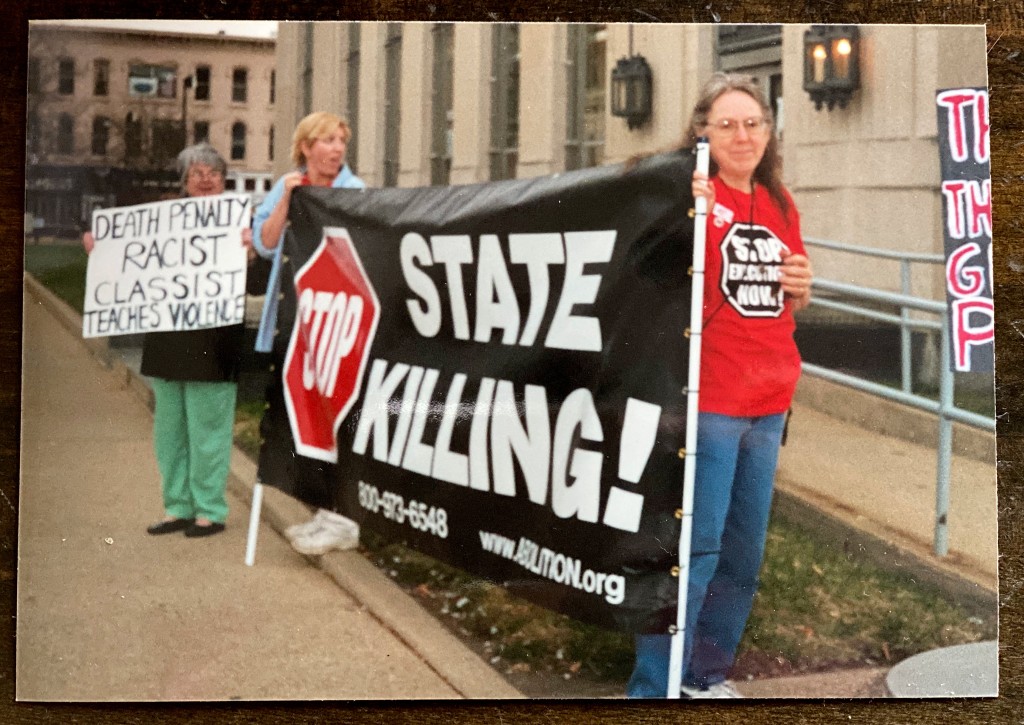

Left/Top: Zann Carter outside the federal building in Terre Haute, protesting the execution of Timothy McVeigh in 2001. Right/Bottom: Zann Carter points out pins from her collection spanning years of death penalty abolition activism.Photos: Courtesy of Zann Carter; Lucas Carter for The Intercept
McVeigh was executed on June 11, 2001. The event brought throngs of reporters and protesters. Neighbors of the prison rented out their lawns to media crews; local businesses sold T-shirts reading “Die! Die! Die!” along with shirts saying “Stop the Killing, Let Timothy McVeigh Live.” The owner of David’s Food Center, a grocery store just across from the prison on State Road 63, became a minor celebrity in the national press for his plans to sell kebabs on the day of the execution. “It was ramping up to be a circus,” Carter recalled.
But the frenzy quickly faded after McVeigh’s execution. When Juan Raul Garza was killed in the death chamber just one week later, the execution attracted a fraction of the national attention. By the time the federal government executed Gulf War veteran Louis Jones on March 19, 2003, the national press was focused on George W. Bush’s “shock and awe” campaign in Iraq, launched the same day.
Today in Terre Haute, the looming return of federal executions does not seem to have created much of a stir. As news came down on Friday, December 6, that the Supreme Court had put the killings on pause, people were flocking downtown to the annual holiday fair downtown, Miracle on 7th Street. At the Dollar General across from the penitentiary on Monday morning, a clerk said there wasn’t much of a change from the norm in the past few weeks. Down the road on 63, a sign above David’s Food Store advertised “Tiki Kabob,” marinated pork on a stick. But it sat vacant with a sign reading “under new management.”
Standing Up to Trump
The disconnect between the death chamber and daily life in Terre Haute mirrors much of the rest of the country. Most Americans just don’t think about capital punishment very often, even those in active death penalty states. Federal death row is especially opaque. Only three people have been executed in the federal death chamber since the Supreme Court reauthorized executions in 1976 — a tiny fraction of the more than 1,500 people executed in the U.S. in that time.
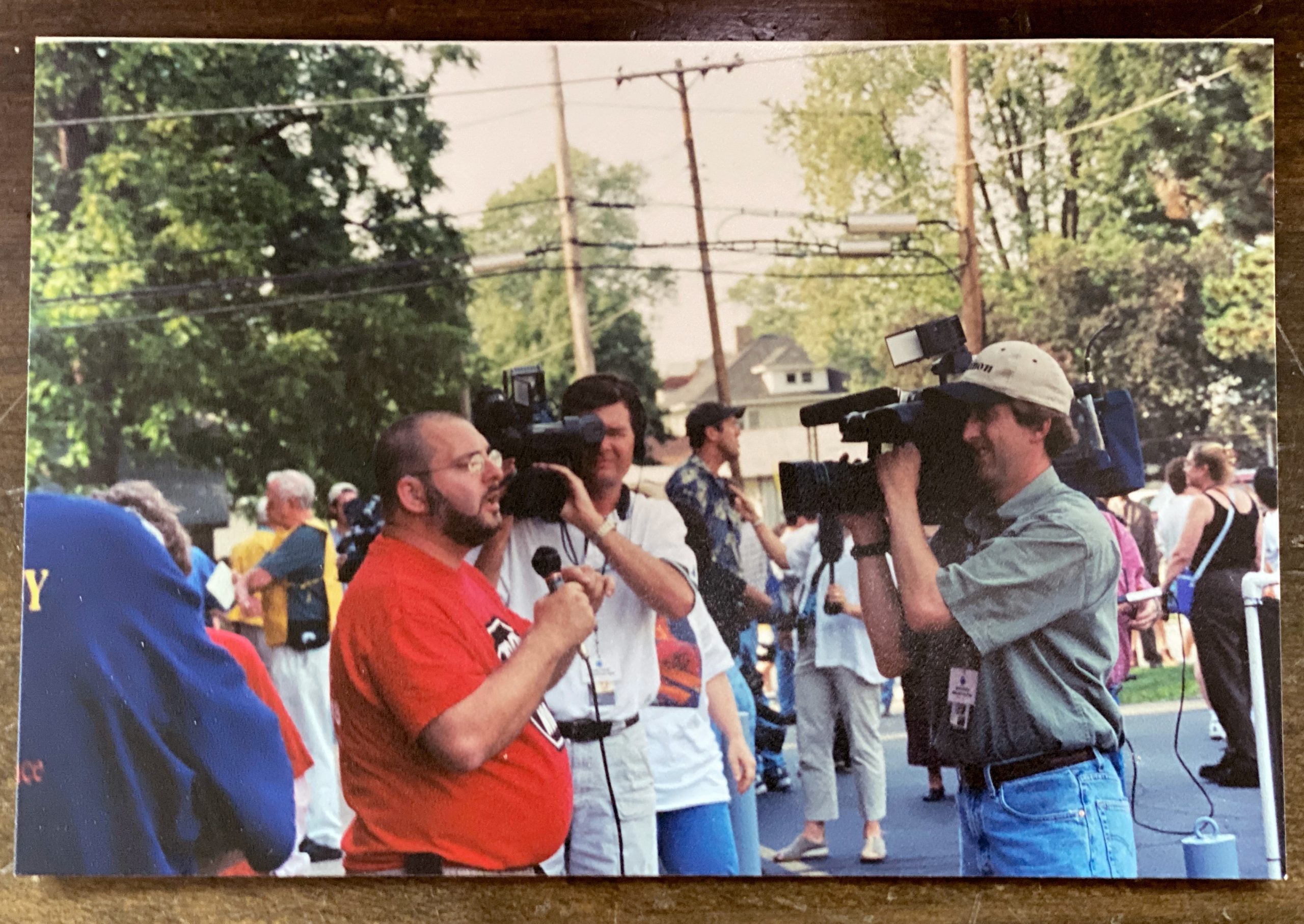
Photo: Courtesy of Zann Carter
Soon afterward, Bonowitz co-founded Death Penalty Action, with precisely that mission in mind. When U.S. Attorney General William Barr finally made his dreaded announcement — that the federal government was resuming capital punishment after a nearly two-decade hiatus — in July 2019, Bonowitz wasted no time. “This is the moment Death Penalty Action was created for,” he wrote in an email to supporters. One of the first calls he made was to Zann Carter. The two had worked together in the run-up to the last round of executions, organizing an 80-mile march from Indianapolis to Terre Haute in November 2000. At first she was reluctant to get involved. In the years after the last federal execution, her mother became sick and her son fell into a drug addiction that would later take his life. “It was a terrible, terrible time for me,” she told me.
Yet some of the most powerful voices against McVeigh’s execution came from murder victims’ families opposed to the death penalty. Bill Pelke, an Indiana native and founder of Journey of Hope, came to Terre Haute with his friend George White, who was wrongfully convicted of his wife’s murder in Alabama. Bud Welch, whose daughter was killed in the Oklahoma City attack — and who forged an unlikely friendship with McVeigh’s father — spoke numerous times alongside Paul Stevens, whose daughter was murdered in Evansville in 1969. “Vengeance isn’t OK because vengeance destroys,” Welch told the Terre Haute Tribune Star in March 2001.
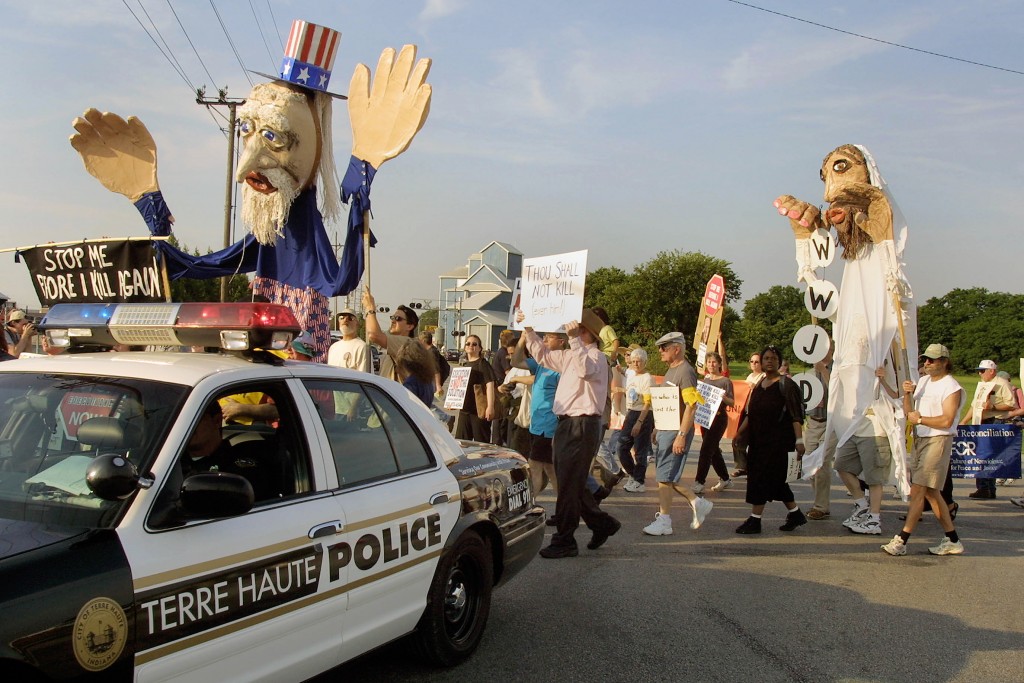
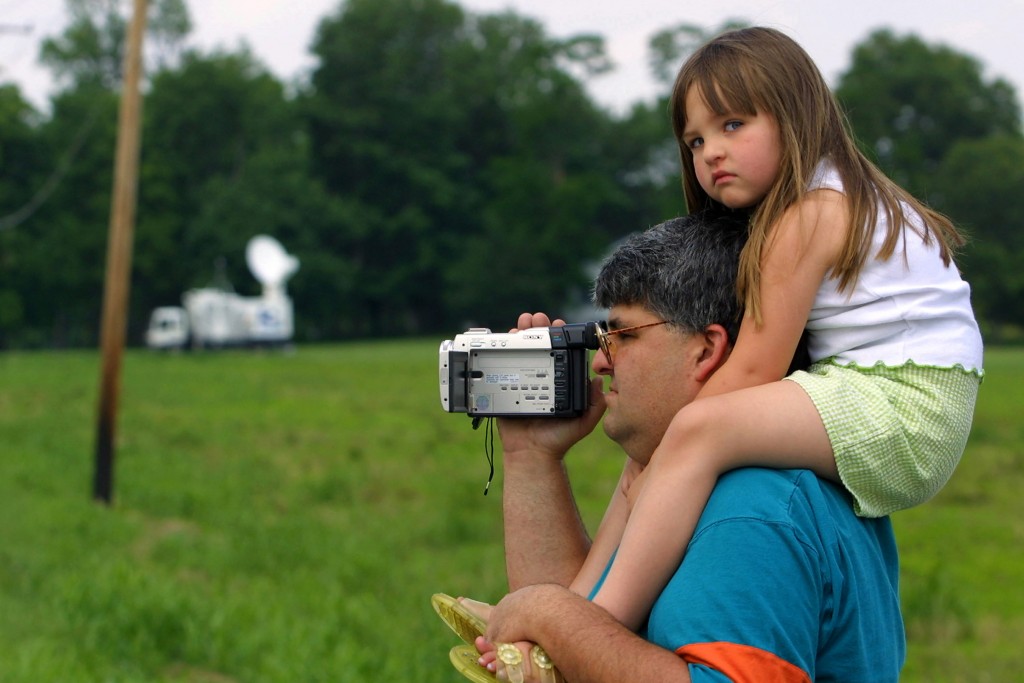
Left/Top: A Terre Haute police car drives ahead of anti-death penalty demonstrators during a march from Terre Haute, Ind., on June 10, 2001. Right/Bottom: Dean Spiegel from Indianapolis carries his 4-year-old daughter Sophia on his shoulders on June 9, 2001, as he videotapes activities near the entrance to the grounds of the U.S. Federal Prison in Terre Haute.Photos: Photo: Tim Boyle/Getty Images
Despite her hesitation, Carter welcomed Bonowitz back to town in 2019. As he got reacquainted with Terre Haute, Bonowitz realized that the federal executions had had more of an impact than he had realized. One woman, who was in college when she participated in the 2000 march, told him that the issue had split the community, with Bureau of Prison employees on one side and death penalty opponents on the other. “If you weren’t for the executions you were against the prison people.” Carter herself was dragged through the mud in an angry letter by the wife of a federal prison employee, published by the Tribune Star.
Particularly shocking was a hate crime that took place in 2003, when a Molotov cocktail was thrown into the window of the CANDLES Holocaust Museum and Education Center. The building was almost completely destroyed, with the perpetrator spray-painting “Remember McVeigh” on one of the outside brick walls. To Bonowitz, it seemed like a clear warning of the death penalty’s “brutalizing effect” — the theory that executions contribute to more crime and social upheaval.
Beginning in October, activists under the banner of Terre Haute Death Penalty Resistance hosted events in classrooms and churches in the community. One speaker, Ashlee Kincaid, told the story of being 13 years old when McVeigh was executed, an hour from her hometown. On the eve of his execution, she said, she was in the car with her father, who pointed at a beautiful sunset and laughed, telling her it was McVeigh’s last sunset. It was her “first empathic experience,” Kincaid said; the next morning she woke up “and imagined what it would be like for the guards to come up and open that cage and to know it’s time.”
The events also featured Jerry Givens, the former executioner for the Virginia Department of Corrections. Givens killed 62 people in his official position between 1982 and 1999. His duties ranged from overseeing the final visits between the condemned and their loved ones to pushing the button that would activate the electric chair. At a downtown church in late October, Givens shared the story of how he almost executed a man who would later turn out to be innocent. “They’re not equipped mentally to do this,” he told me about the people working inside the federal prison in Terre Haute. “People don’t understand.”
Givens is one of several former prison officials who wrote to the Trump administration in November urging him to stop the executions. “To walk into a room and kill somebody, that is traumatic,” wrote former prison superintendent Frank Thompson, who oversaw two executions in Oregon years ago. In a subsequent piece, Thompson described the “long-term repercussions from the process of practicing, over and over, to kill someone.”
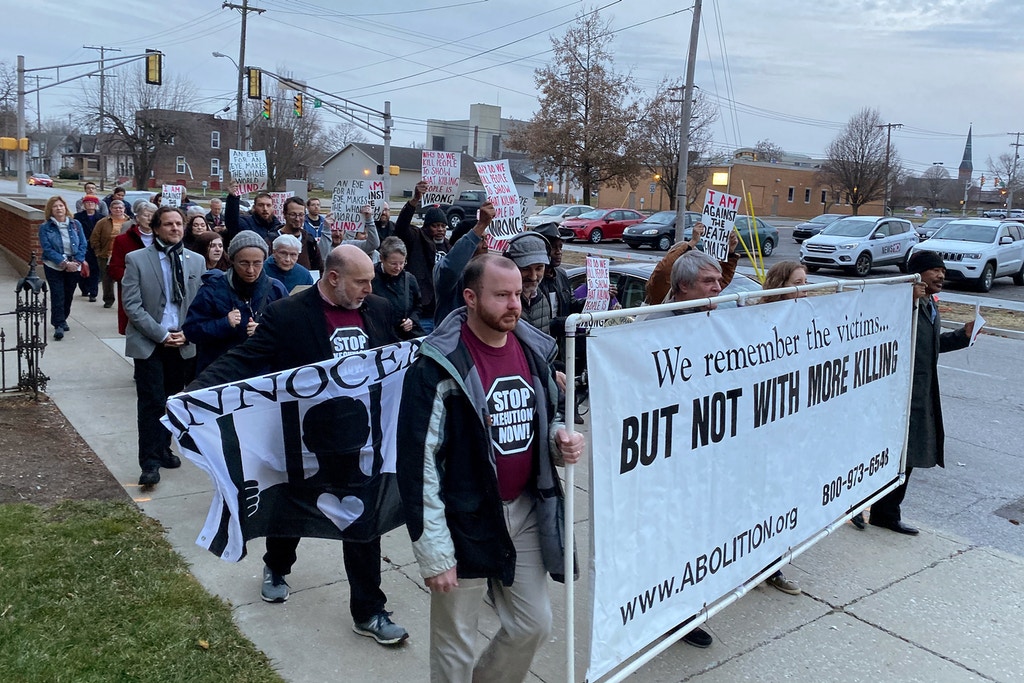
Activists march through Terre Haute on Dec. 8, 2019, the eve of Daniel Lewis Lee’s scheduled execution.
Photo: Liliana Segura/The Intercept
On December 5, Bonowitz received an unexpected email. It came from a man named Lance Gurel. His wife’s sister had been murdered by Lee, the first man set to die. The family had been outspoken about their opposition to Lee’s execution. Gurel said that they planned to be in Terre Haute should the execution proceed. He would join them at the church.
An American Crossroads
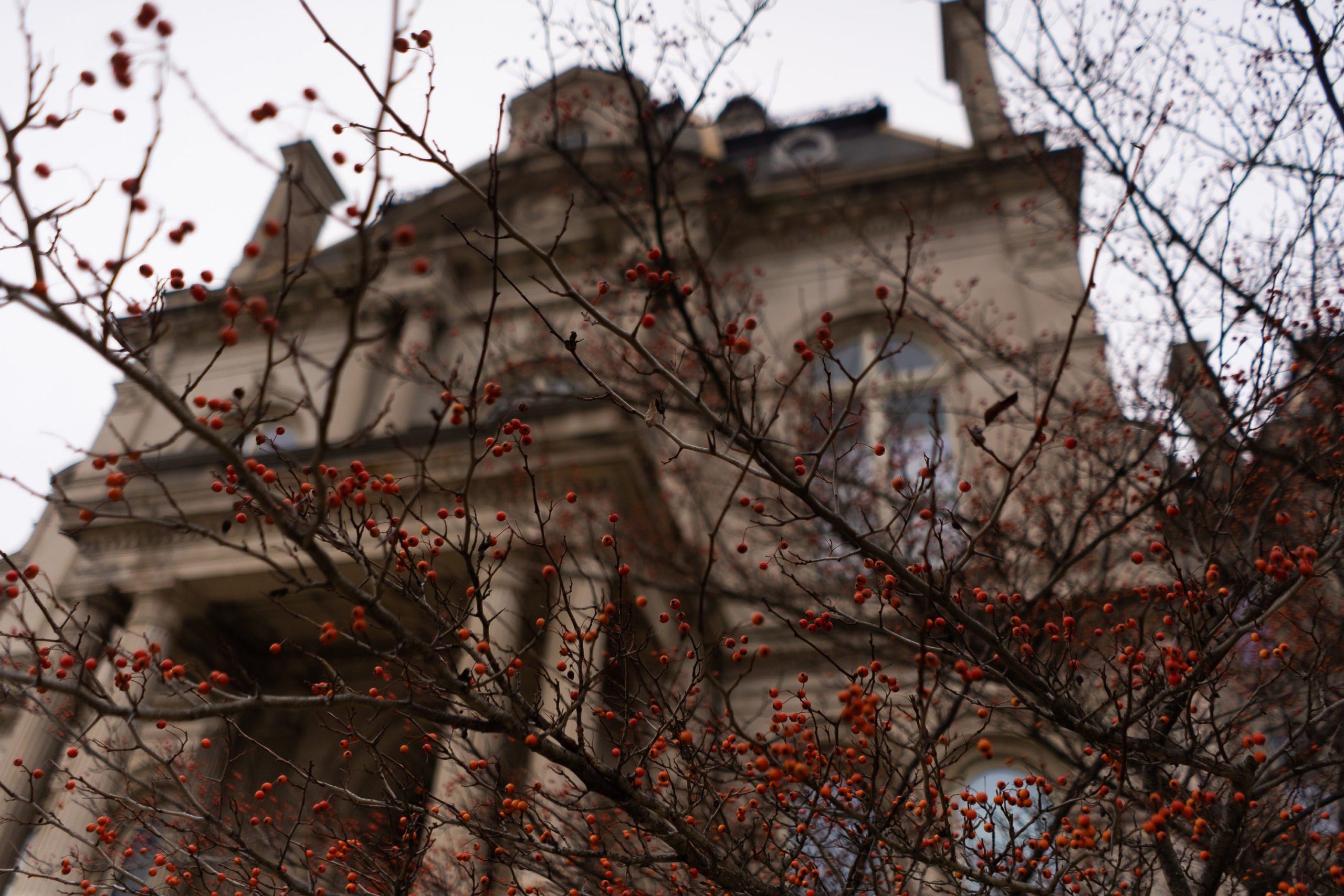
Photo: Lucas Carter for The Intercept
It was less than a week before the Vigo County municipal election. Downtown, where empty storefronts persist despite efforts at revitalization, colorful signs advertised competing ballot initiatives. Particularly ubiquitous were green signs reading “Vote Yes on #1,” a referendum to bring a casino to the area, and with it, jobs. That vote passed by a healthy margin.
Like other areas of Indiana’s Wabash Valley, where mines and manufacturing once powered the local economy, Vigo County has struggled over the past few decades. Unemployment rates are among the highest in the state, peaking at 12 percent in 2010. Economic woes have led to controversial decisions about where to devote government resources. Especially contentious is the recent decision by the county commission to divert education funds to construct a “megajail” to the tune of $66.5 million. “We are a poor county with a declining population,” one opponent wrote in a 2018 letter published in the Tribune Star. “If we ever hope to turn things around here then we need to make this an appealing place to live, a place where young people might want to settle down. … How can we have first-rate high schools and a mega-jail too?”
New prisons and jails have often been pitched as a boon to American communities, only for projects to evolve beyond their original scope while failing to bring the desired economic benefits. The original U.S. penitentiary on State Road 63 was designed to hold 1,200 people, at the behest of Franklin Roosevelt, who authorized the project in 1938. Terre Haute’s selection for the new prison site was cast as a matter of civic duty; the chamber of commerce solicited funds to purchase the land it would lease to the federal government. The Coca-Cola Bottling Company sent a supportive note on cheerful stationary, along with a $2,500 check. As the city prepared to unveil the project, the chamber lauded the local media for their “splendid cooperation” in not endangering the plan through premature publicity — “a matter in which every citizen can take a great deal of pride.”

A newspaper clipping from the archives belonging to the Vigo County Historical Society and Museum, showing the ceremony to break ground at the penitentiary in 1938.
Photo: Liliana Segura/The Intercept
Key to this rehabilitation was prison labor: the Terre Haute facility was one of the original sites for Federal Prison Industries, Inc., the government corporation that generates hundreds of millions of dollars by paying incarcerated people less than a dollar per hour for manufacturing work. As the prison expanded, it strayed further from its celebrated humane approach. By 1990, with the federal drug war underway, the population hovered at 2,000 — and the Indianapolis Star reported plans for a $10.6 million segregation unit, along with more funding for trucks, reroofing, and augmented perimeter security. Today the federal penitentiary complex comprises three different facilities housing more than 2,635 people, including those in Communication Management Units — a post-9/11 experiment in heightened isolation.
The last time the BOP restarted federal executions, the demands on the penitentiary were intense. “Hundreds of staff were involved in planning for the execution, developing the policy and execution protocol, readying the facility, meeting the needs of the media and the public, and ensuring the unprecedented viewing by victim witnesses at a distant location,” the BOP’s official newsletter reported after the killing of McVeigh. One man who is currently on death row in Terre Haute told me that he could tell that the prison was gearing up to restart executions months before Barr made his announcement, based on the level of activity around him. “The day that the Justice Department announced that they would be re-starting executions, it literally shook this place to its core,” he wrote.
In the days leading up to the first execution date, the guys on the row were on “pins and needles,” he said.“Constantly checking the news, checking the court logs.” The stay by the courts came as a huge relief, he said. “But how long is the stay gonna last?”
Not in Our Names
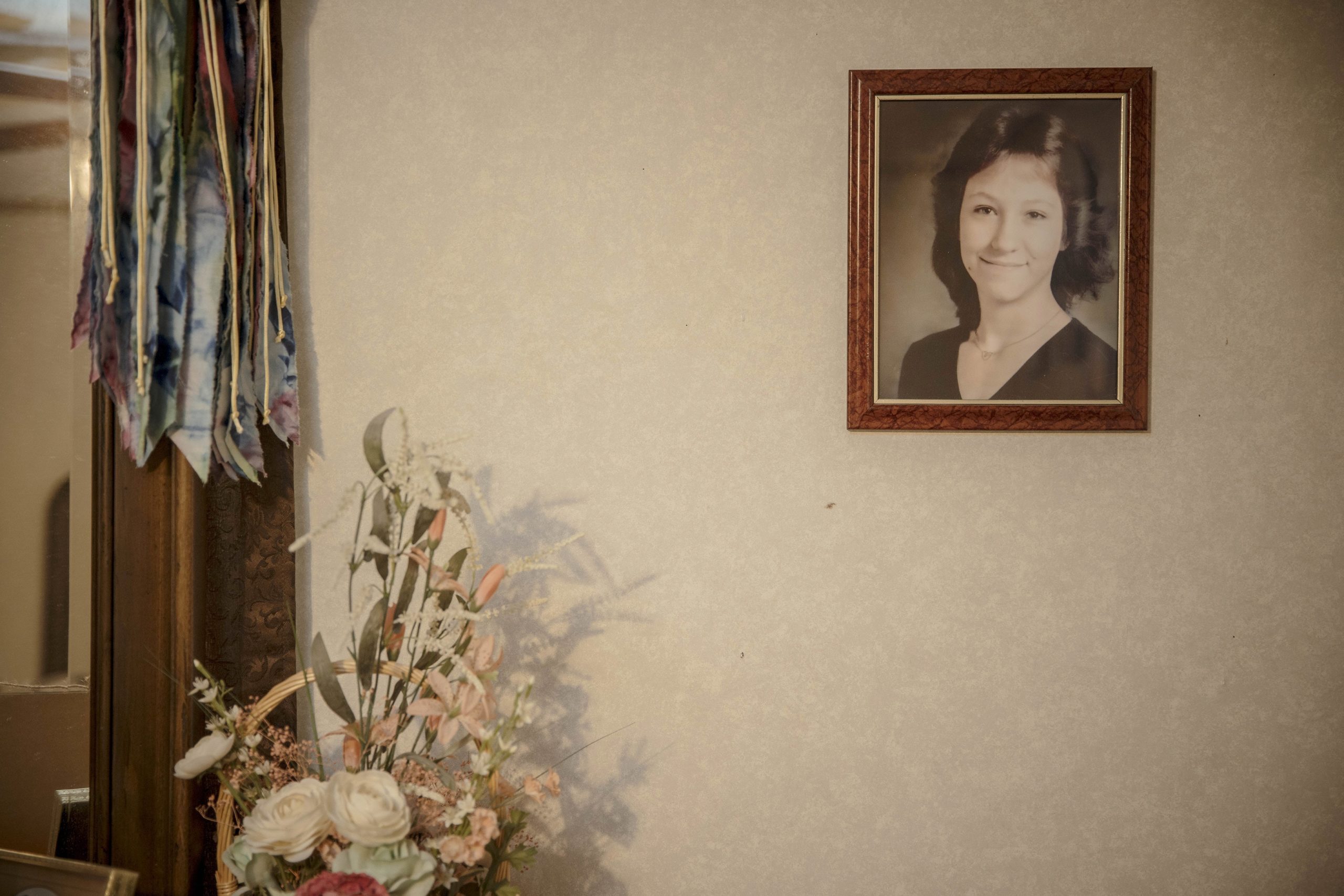
Photo: Andrea Morales/The New York Times via Redux
The Gurels had been dreading their trip to Terre Haute. Their daughter planned to attend the execution, not out of support, but in order to bear witness. “We’re just going to be there to support her because we know it will probably be traumatic,” Kimma Gurel said. The anticipation of more trauma compounded a painful process that has dragged out for more decades. Kimma’s sister, Nancy, was brutally murdered in 1996, along with her husband and 8-year-old daughter Sarah. A pair of white supremacists named Chevie Kehoe and Daniel Lewis Lee, members of the Aryan Peoples Republic, were charged with the crime. U.S. attorneys initially offered a plea deal to both. After Kehoe took the deal, “they brought us into a room and told us … if we offer Daniel Lee life without parole and he accepts it, we can just stop right now. The trial’s over, that’s it. And we said, ‘Absolutely. Do it.’”
But under Attorney General Janet Reno, the DOJ overruled the decision. A six-week trial ensued, during which it was revealed that Kehoe, not Lee, had been the leader in the slaughter. After Lee said he was not capable of killing a child, Kehoe murdered 8-year-old Sarah. Yet Kehoe’s life was spared while Lee was sentenced to die. Not only did it seem like a travesty of justice, the case only dragged on from there. Kimma’s mother, Earlene Peterson, has held on to an old flip phone for years, solely to ensure that she does not miss any calls from the BOP. In an op-ed earlier that month, the family called out Bill Barr for claiming the executions would bring closure to victims’ families. “In truth, this has been as much a sentence carried by us as the person scheduled to be put to death in our names.”
With the specter of an execution date ahead, the Gurels got in touch with people who advocated for Lee. “We wanted him to know that if they do put him to death that it wasn’t us,” Kimma said. With his execution off for now, the relief feels only temporary. As the Trump administration continues to try to push the execution through in the coming year, “we may be right back where we were.”
Before leaving Terre Haute, I drove toward the prison on South Third Street, one of the main commercial arteries in town. Some four miles from the penitentiary, next to a tax office, is a small building with railroad track out front. This is the newly built CANDLES Holocaust Museum and Education Center, the one that was destroyed by fire in 2003.
The museum’s founder, Eva Mozes Kor, named it CANDLES as a tribute to her own twin sister and siblings like them; it stands for Children of Auschwitz Nazi Deadly Lab Experiments Survivors. Along with her sister, Kor was subjected to the torture of experiments at the hands of Josef Mengele, the Nazis’ notorious “angel of death.” In a memoir, Kor described how she returned to Auschwitz in 1993 and met with a doctor who had signed the mass death certificates of people murdered by the Nazis. He told her how the images from the gas chambers haunted him.
In 1995, as officials in Terre Haute were getting ready to unveil the execution chamber, Kor returned to Auschwitz and stood alongside the former Nazi doctor. He signed an affidavit about what he had seen and done while Kor signed a statement of forgiveness. “Immediately I felt that a burden of pain had been lifted from my shoulders, a pain I had lived with for fifty years,” she wrote. “I was no longer a victim of Auschwitz, no longer a victim of my tragic past. I was free.”
As the museum prepared to close on December 13, a docent told his own story to a small group of visitors. He escaped the Nazis to the Unites States and eventually settled in Terre Haute. He emphasized that his German neighbors had been good people. Anti-Semitism was “a government imposed policy,” he said.
A few feet from where he spoke, burnt remnants from the 2003 arson were on display in a glass case. I asked if he recalled the hate crime carried out to avenge the death of Timothy McVeigh. “I was there a few hours after the fire was put out,” he replied. The community helped rebuild the museum, raising hundreds of thousands of dollars in a matter of months.
But like most people I met in Terre Haute, he said he was not eager to discuss the federal executions or the penitentiary a few miles away. “It’s a good town.”
Liliana Segura | Radio Free (2019-12-29T13:00:08+00:00) In the Shadow of the Federal Death Chamber, Executions Are on Hold — For Now. Retrieved from https://www.radiofree.org/2019/12/29/in-the-shadow-of-the-federal-death-chamber-executions-are-on-hold-for-now/
Please log in to upload a file.
There are no updates yet.
Click the Upload button above to add an update.
